#Hidden Movement
Explore tagged Tumblr posts
Photo

5 notes
·
View notes
Text

idc what canon says, you couldn't pry visible knee joints from my cold dead hands even if you wanted to
#on a technicality for this range of movement they should be double jointed like in stop motion puppets which isn't exactly visible here#but i need ppl to know they should be double jointed so just know the rest of the mechanisms is hidden inside#i love visible bj joints sm it was so hard having to cover them for my stop motion project ywy#pls focus on that and not the fact p looks different everytime i draw him ywy#my art#lies of p#lop#lies of p pinocchio#lies of p fanart
453 notes
·
View notes
Note
Sleeping around thinking that T means the chances of pregnancy are next to zero.
Over the course of a week, over 20 different guys dump a load in you.
And each week that passes your brain has to try harder and harder to ignore the fact your belly went from flat to bloated and now is slowly getting bigger and bigger.
Sucking in, big jumpers, using a belt or even a corset to keep it flat, and it works…
But all it does is hide it, and deny to you and everyone what’s happening inside there…
But that’s a problem for future you, now it’s time to enjoy yourself in the club…
I feel it kick for the first time when another random from the club is pounding away at me. If he thought it was weird that I’m wearing a corset under a sweater and refuse to take both off during sex, insisting that he fuck me doggy style in this club bathroom stall, then he doesn’t let on. He’s drunk. I’m painfully sober.
It’s not that I don’t want to drink. It’s that the smell of alcohol makes me nauseous, now. I don’t like to think about why.
He cums, inside, and I don’t even have to ask him to leave. He slaps my ass as a farewell, and leaves the stall. I hear him leave the bathroom all together, and I’m alone again. I’m frozen, trying to tell myself what I felt wasn’t really a—
I feel another kick. I stand upright with a start, cum dripping down my legs. I stare down at my sweater, as my shaky hands lift it to reveal my straining corset.
Don’t.
You won’t like what you see.
Just go back out where the music is.
Don’t take it off.
I feverishly start untying the corset strings, feeling myself bulge more and more with each one that comes free.
Don’t!
I rip it off, all the way.
My belly surges forward almost comically, sort of flopping outward. I gasp out loud at how big it is—I’ve been getting dressed in the dark (both early in the morning, and late at night) ever since I noticed the distinct, firm, round swell. Keeping my hands away from it. Ignoring how much harder tying the corset is, throwing aside any pants that don’t zip anymore regardless. I hadn’t realized it had gotten this bad.
But deep down, I have a rough estimate of how many months it’s been. It feels like time has gone too fast.
There’s a feeling that’s less of a kick and more of a dragging feeling. Like a limb. Inside. I whimper out loud, stumbling back to try to escape it. But the belly comes with me. It’s grotesque—if I concentrate hard enough, I swear I can hear a heartbeat coming from it. pulsing. growing bigger.
I have to admit that I’m pregnant—really pregnant, giving birth in two or three or four months pregnant, middle-of-the-road-unable-to-terminate pregnant, going to get huge and obvious and then physically have a baby pregnant—and I don’t know who put it in me. Any one of the people I fucked over the past four or five or six months could have done it. If I went to the doctor, I’d probably be able to narrow it down. But going to the doctor is admitting that there’s a baby in there. Going to the doctor means acknowledging that it’s going to be born, and there’s nothing I can do about it.
Tears burn at my eyes. My hands shakily hover over the round, bulging mass. I almost touch it, like all the happy pregnant people in advertisements do. I almost accept that I’m going to be a Daddy soon. And by the flutters of activity that keep just barely shifting the visible surface, it might be sooner than I thought.
But maybe not tonight. I close the corset tight, shoving it back in. Pulling my sweater over it. Out of side, out of mind. I have another round of fucking in me, even though the corset has me out of breath, and something in there is squirming.
#tmpreg#mpreg#mpreg kink#pregnancy k1nk#dark preg#hidden pregnancy#pregnancy denial#belly movement#mpreg belly#belly torture
57 notes
·
View notes
Photo

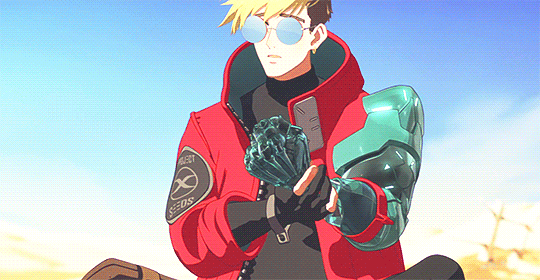


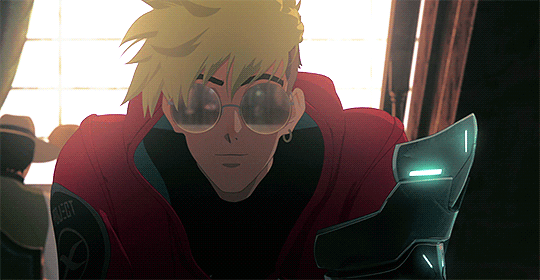



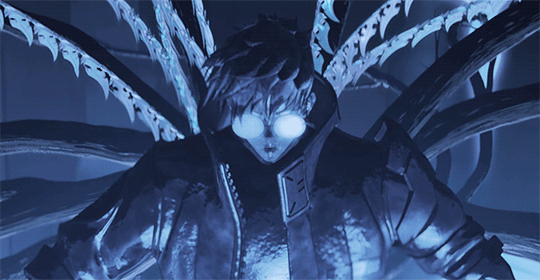
Trigun Stampede s01 || Vash + the reflection on his glasses
(edit: added one i missed)
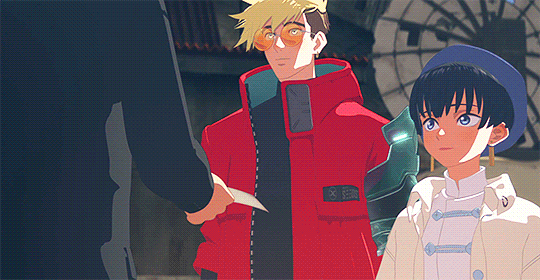

( @crazymadredfox thank you for the mention of this part!)
#cant believe i missed this one when i specifically rewatched the whole season for this :')#trigun#vash#vash the stampede#trigun stampede#trigunedit#mine#gif:trigun#so i thought the reflective effect appeared in more episodes but it was only episode 1#and then it kinda reappears when vash is not vash anymore in eps 11-12#the first episode had a lot of bright lights (desert sun and then the lights from the plants)#which made the reflection seem natural to happen but it was interesting it happened quite a lot as a storytelling tool almost#like it helped to push across this introduction of vash bc at first we dont know anything about him (first time fans like me heh)#so they hide his eyes in important moments including his first appearance#and it goes possibly for how that reflection is how vash doesnt know meryl or roberto yet so it takes a while for him to trust them#and see whats their deal#i like that 7th gif with comparison of rosa beside vash.. you can see her go on a whole journey with just her eyes#but vash's thought process is hidden until the last moment where he doesnt want to fight the julai guys who want to take him#the last one is so creepy.. he's an empty husk! there could be pain or numbness or multiple other emotions in his eyes#but the glasses put them behind a barrier and only the movement tells us more that hes floating there trapped emotionless#its so sad.. uff i love this show
336 notes
·
View notes
Text
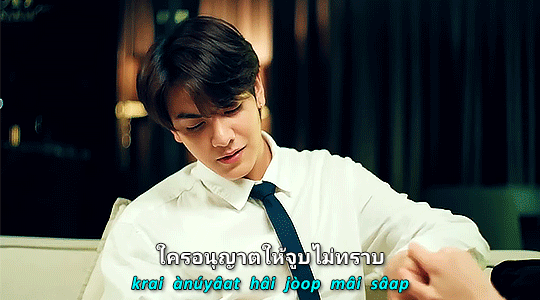
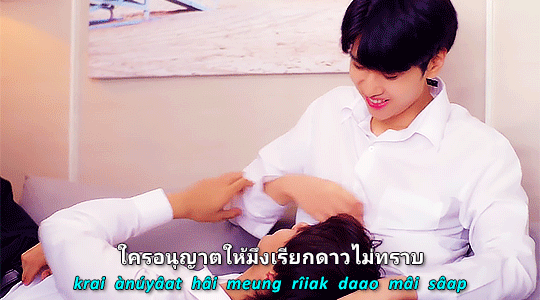
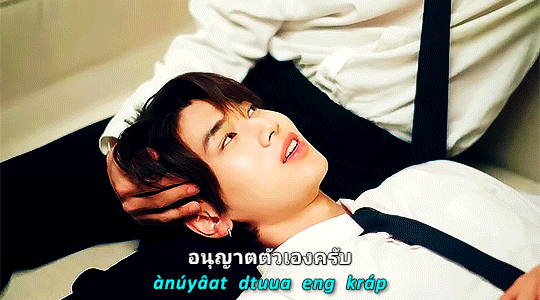
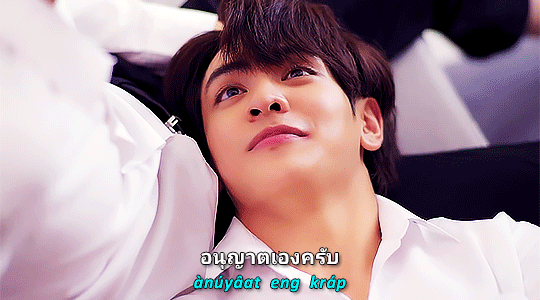


Hidden Agenda (2023) | Episode 10
– I don't know who gave you permission to kiss me. – I gave myself permission.
Star In My Mind (2022) | Episode 7
– I don't know who gave you permission to call me "Dao". – I gave myself permission.
#hidden agenda#jokezo#star in my mind#simm#kluendao#kluennuea#daokluen#nueakluen#ha ep10#simm ep7#meine grafiken#hagifmine#simmgifmine#adrm#so what if i lost my mind when they had the exact same dialogue in hidden agenda as they had in simm except they switched places and lines#so what!!!!!!!!!!!!#that scene from hidden agenda HAD to be based on simm right? right????#it's waaaaay to similar to be a coincidence#like even their movements are near identical (except joke/joong doesn't grab zo's/dunk's hair the way dao/dunk did to kluen/joong)#idk if it was joongdunks idea to copy simm or someone elses but!! either way i'm going insane#(did i go with thai captions over english ones to really drive home the fact those are basically the same lines? yes i did)#(bc you can't really tell from the official eng subs that were put for these two scenes djfnfn)#(also this is it. my very first thai language gifset djfjfjfj) (let's see if there will be more thai gifs following in the future gkdjfjjf)
102 notes
·
View notes
Text
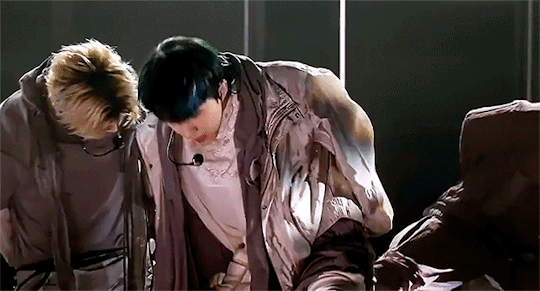
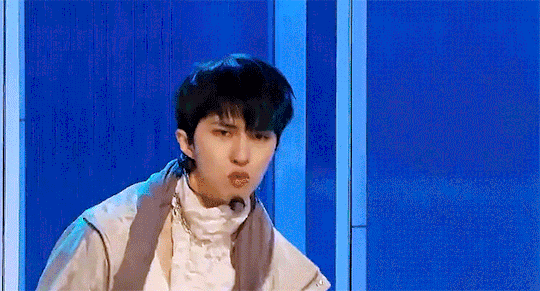
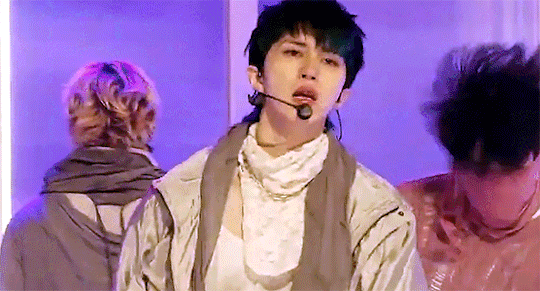

A desperate dream Wandering in it at night Ribbons tied to my fingertips As you dance you Meet with my eye
#vixx#vixxnetwork#vixx ken#lee jaehwan#jaehwan#231126#continuum era#inkigayo#my gifs: vixx#my gifs: jaehwan#i wish we could've seen their piercings better ;;;;#jaehwan and hyuk's are hidden behind the mics and taek's behind his hair iskjdlfs#also i kinda hate the way inkigayo's directs the camera movements...#there's always way too much zooming in and out#i could only make gifs of the parts they weren't doing much
38 notes
·
View notes
Text
In April 1976, my twenty-seven-year-old uncle, Craig Baskerville, made a tape recording of his great-uncle, Thomas Holcomb. The tape is scratchy, and Lady, the family dog, keeps barking in the background. “My father was a runaway man,” my great-great-uncle Tom says. “He was a slave” in Cumberland County, Virginia, near the Appomattox River, and “he had a boat.” Sometime in the spring of 1865, after the Battle of Richmond, when Confederate soldiers were “running all through the woods,” Jackson Holcomb “was down there” ferrying those “Jeff Davis men . . . across.” “And everybody he put em across the river they give him money.” They “paid him.” On the recording, my uncle Craig sounds a little puzzled. Thomas Holcomb seems to be saying that his father had a piece of property, and that he used that property to make deals that sound a lot like contracts: a promise to pay in exchange for a promise to ferry. Why would a band of heavily armed white men, who were risking their lives in a war to preserve slavery, treat an enslaved man as if he had rights?
Ar
Searching for an answer to this question sent me down the path toward this book, which reveals a hidden history of civil rights among African Americans. It’s a story that begins not in 1955 but in 1830. It is not about people mobilizing to march but about what made it possible for the people to march. It is about the rights to make a church, own a home, get paid. These civil rights are like an invisible thread woven into the fabric of Black people’s lives since before they even had rights, patterning how they loved, worshiped, worked, learned, and played. At bottom, this book is about how ordinary Black people used law in their everyday lives. People like my great-great-great uncle and aunt, Jackson and Louisa Holcomb.
They touched law at every step of their lives. A few years after freedom came, Jackson Holcomb made a marriage contract with Louisa Brown, who had also grown up in slavery. In 1883 they bought a hundred acres of farmland from a local white woman, with a swap of timber rights for eight months’ rent. Over the next few decades, they bought and sold and mortgaged more land, and each time they had a deed recorded at the Cumberland County courthouse. Every year, Jackson Holcomb rode the ten miles up Guinea Road to the courthouse and paid their property taxes. As time passed, the Holcombs bequeathed some of that land to their children and nieces and nephews, sold some of it to a Black neighbor, and donated still more to the Cotton Town Odd Fellows Lodge and to their church, Midway Baptist, an unincorporated religious association founded in 1874, where they held the rights and privileges of membership. In the 1920s, the Holcombs’ youngest son, Thomas, and his wife, Annie Reaves Holcomb, moved to South Orange, New Jersey, a small town next to the city of Newark.
Like most migrants, they never really left home. They started “fellowshipping” at First Baptist South Orange but they remained members of Midway Baptist. They bought a little house and paid taxes in South Orange but they also sent home money for Thomas’s brother Robert to take to the courthouse for their share of the taxes on the family’s land in Cumberland. They laid plans to move back for good, buying out some of Thomas’s relatives’ shares of the land. They were always driving down for funerals and family visits. Sometimes they brought along their niece and nephew, Yolanda and Osborne Reaves, who lived with them in South Orange after Yolanda and Osborne’s parents got divorced in the Cumberland courthouse. Later, they brought along Yolanda’s children, Craig and Penelope, my mother.
Uncle Tom died in 1976, five years after Aunt Annie and a few months after his interview with my uncle Craig. I was five years old. We all caravaned down from New Jersey, my little sister and I yawning in the back seat of our family’s powder-blue Plymouth Valiant. The burial was at Midway Baptist, on a strip of land Thomas and Annie had deeded to the church in 1965. Uncle Craig talked with lawyers to settle up the deeds, tax receipts, life insurance, and the title to the Holcombs’ old Buick, using notes Thomas had penciled out sometime earlier. Then Craig put the papers back into my uncle Tom’s dented, wood-grain-metal file box. I am looking at it now. It holds but a few of the millions of legal acts that are memorialized on scraps of paper in attics and basements and on a hundred thousand docket books in county courthouses all across America—the vast paper trail of “the law.” Once you start looking, you realize that the history of Black civil rights is all around us.
Article continues after advertisement Today, even as many historians remain committed to the idea of scholarship as struggle, they are debating what that struggle actually was and what lessons it holds today.
The story of Thomas and Louisa Holcomb and their descendants is not a very special one (though it is special to me). Probably many of you, reading this now, have a similar story. Yet precisely because it is so ordinary, it challenges much of what we think we know about civil rights— and about Black people and the law more generally.
The story of civil rights that most people are familiar with goes something like this. Once, the legal system was dominated by racist state and local officials who refused to recognize not only Black people’s civil rights, but their basic human dignity and even their lives. Law was a hostile, fearsome power to be avoided whenever possible: full of unknowable secrets and often deadly. Then, in the 1940s, a few brave lawyers ventured south, bent on changing the law. They confronted the system with a carefully planned series of strategic lawsuits and with the powerful symbolism of a Black lawyer in a white courthouse. Soon, ordinary African Americans, their sense of possibility awakened by Brown v. Board of Education of Topeka and other Supreme Court victories and galvanized by racial justice activists, coalesced into a mass movement demanding that the federal government force those racist state and local officials to recognize Black people as free, full members of American society. This is the master narrative of civil rights. It is powerful, not least because it refuses to concede to right-wing reactionaries the right to say what “freedom” is.
It is also powerful because history is not just about the past. “History is literally present in all that we do,” James Baldwin wrote, at the height of the civil rights movement: “we carry it within us.” The choices historians make—what to write about, what counts as evidence and how to interpret it—are inevitably shaped by the world around us. African American history is no different. In its modern form it grew directly out of the civil rights movement itself. Activists in the 1960s created Black history units to teach in the Mississippi Freedom Schools; at colleges, a Black student movement demanded Black history courses, faculty to teach them, and a wholesale rethinking of what our country’s history is and how it should be taught. Many leading Black historians came into the field profoundly shaped by their experiences as activists in the 1960s; some explicitly said that their scholarship was a continuation of the struggle for Black freedom.
Today, even as many historians remain committed to the idea of scholarship as struggle, they are debating what that struggle actually was and what lessons it holds today. Instead of looking from the top down— from the perspective of great leaders like Martin Luther King and Malcolm X, famous lawyers like Thurgood Marshall, statesmen like Lyndon Johnson, and the liberal justices of Earl Warren’s Supreme Court—a “grassroots” approach has transformed our understanding of the movement by rethinking it from the perspective of “local people.”
Others have taken a long view of the era of mass protests commonly called The Movement—the dozen years or so between the Brown v. Board of Education decision in 1954 and the Civil Rights Acts (1964, 1968) and Voting Rights Act (1965). Looking back to the 1930s and forward to the 1980s reveals a much bigger struggle, contend the proponents of the “long civil rights movement” view, a struggle for full citizenship, economic justice, and true grassroots democracy, a struggle that burned as fiercely in New York and Los Angeles as in Selma, Alabama. Movement activists realized that civil rights were not enough, the long-movement scholars argue. Real freedom required changing the underlying structures that kept most Black people poor, politically weak, undereducated, and abused by police. It meant transforming American democracy itself.
Article continues after advertisement
What hasn’t been rethought is the fundamental moral drama of the movement, in which civil rights—and Black history more broadly—are framed as an unfinished “freedom struggle,” a battle against the forces of “plunder,” a journey from humiliation to dignity, from second-class citizenship to full citizenship, from Black fear in the face of white lawlessness to Black people defiantly asserting their rights under the law. That moral vision gleams bright today, as police killings mercilessly continue and as Republican politicians knowingly enact policies that systematically hurt Black people. Movement-centered scholarship is as urgent and necessary today as it was in the 1960s.
But the notion of Black history as a freedom struggle has also cost us something. It has helped make Black history almost synonymous with the history of race relations, as if Black lives only matter when white people are somehow in the picture. It has laid a moral burden on African American history that few other scholarly fields must carry, urging us to judge our ancestors according to how well they advanced the freedom struggle. It has often infused a subtle romanticism into African American history, with Black people playing the role of humble folk heroes overcoming adversity against the odds, or “fugitives” defined by a common history of dispossession and “yearning for freedom.”
Most of all, it has shrunk our vision of Black life down to the few areas of Black life where federal law and social movements made a difference. There are shelves full of books about the struggle for the right to vote, to open up the workplace, schools, and military, and to challenge a violently racist criminal justice system.
Overshadowed are many other parts of life that Black people might have cared about just as much but that do not fit into a story of freedom—things like marriage and divorce, old-age care, property-owning, running churches and businesses. Historians have echoed the racial justice advocates of the 1950s and 1960s, whose courthouse showdowns with hostile white officials have become canonized in films such as Selma and Just Mercy. Because African Americans were “ ‘afreaid to go to the court house to vote,’ ” as one Black farmworker wrote in a letter to the NAACP, scholars have assumed that they were afraid to go to the courthouse for anything else.
It has been easier to imagine Black people fighting for “freedom” or “ justice” or “full citizenship” than to imagine them arguing over alimony or a deed of trust. In the freedom struggle story, Black people are seen as ordinary and heroic precisely because they knew so little about law. But if that is so, then why, when a mass movement against racial injustice finally took hold in the 1950s, did so many Black people put their faith in law at all? Civil rights history has left Black people disconnected from our own legal commonsense, the way we actually think about and use law in our daily lives. It has made it harder to see Black people as people in full.
6 notes
·
View notes
Text
PLEASE THIS WAS SOOO HOT 🥵🥵🔥🔥
We NEED to talk about this more 😏🥵
“Do you like excitement?” 😏
“Then let’s make it exciting” 🥵
Hidden love (2023) - Ep. 18 (Chen Zhe Yuan & Zhao Lusi)
#STFU THIS WAS SOOO HOT#DAMN DUAN JIAXU#WARN US FIRST 🥵🥵#the movement 🤌🏼#the husky whispering 🥵🔥🔥#man’s got moves#AND I WASNT READY#duan jiaxu making us all fall in love with him#poor zhizhi never stood a chance#that lil eyebrow raise 😏#man knew what he was doing#they need to give us more of this if ever they give us season 2#please please let there be a season 2 🥺🥺🥺#my only complaint is that duan jiaxu is completely fictional#romance cdrama#hidden love#chen zheyuan#zhao lusi#duan jiaxu x sang zhi#duan jiaxu#sang zhi#duan jiaxu teasing his zhizhi#all the FREAKIN butterflies in this scene 🦋🦋🦋
46 notes
·
View notes
Video
youtube
If you look closely you can spot an (in)famous store in the background of Hidden Figures (2016).
A 34 second history lesson.
#Hidden Figures#Janelle Monae#history#Civil Rights Movement#David Richmond#Franklin McCain#Ezell Blair Jr#Jibreel Khazan#Joseph McNeil#F. W. Woolworth Company#Black in Period Films
40 notes
·
View notes
Text
Was anyone going to tell me Chi is getting an anime adaptation? And by studio madhouse??!
#amazarashi for the op pls 🙏🙏#hate to be the kind of person that says that for these next 5 seconds but#this is going to be the ‘hidden gem of the season’ in anitubers videos#animanga#moralgayness#idek how to tag it#the tag is nonexistent..#chi.#チ。#on the movement of the earth#chikyuu no undou ni tsuite
3 notes
·
View notes
Text
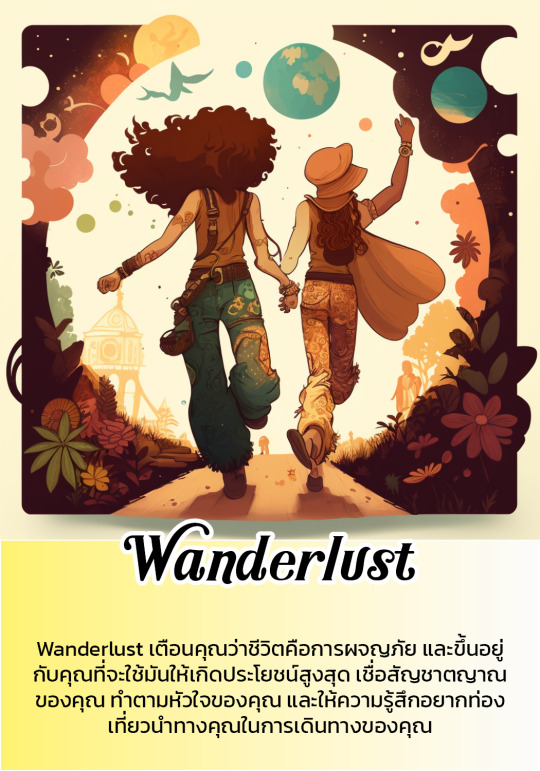
Wanderlust reminds you that life is an adventure. And it's up to you to make the most of it. trust your intuition follow your heart and a sense of travel guiding you on your journey. Maybe life isn't strewn with petals. Your receipt of this card is a sign that your soul wants to awaken from its journey.
Available here
#oracle#spiritual#spiritual awakening#hippie#history of the hippie movement#oracle of the unicorns reveal and full flip through#oracle of the unicorns#oracle deck#oracle cards#tarot of the hidden realm#best spiritual movies#spiritual movies#best of spiritual movies#spiritual enlightenment movies#spiritual path#the rider waite tarot#top 10 spiritual movies#spiritual growth#spiritual education#spiritual bypassing#spiritual films#spiritual tools
10 notes
·
View notes
Text

#landscape#nature photography#outdoor beauty#scenic view#waterfalls#long exposure shot#artistic expression#dreamy vibes#surreal colors#mesmerizing motion#picturesque scenery#tranquil atmosphere#immersive experience#hidden gem#upstate New York#serene escape#natural wonders#vibrant hues#cascading water#dynamic movement#ethereal beauty#captivating moments#visual storytelling#breathtaking landscape#tranquil oasis#hidden treasures#magical ambiance#peaceful retreat#natural landscape#outdoor adventure
6 notes
·
View notes
Text
thinking of getting a sunflower lanyard even tho it's not really a thing in my country yet less so in bellybutton of a city i live in
#but still#gotta supoort the movement and such#actually adhd#adhd adult#adhd#hidden disability#sunflower lanyard#adhd life#ami.txt
6 notes
·
View notes
Text
Have to skip flamenco classes tomorrow. Overestimated just how much my hips and knee could take doing the Fight Club yesterday and am now In Pain
#during the fighty workshops: hm wow this hurts. let’s keep going I’ll take painkillers when I get home’#my hip just completely seized on the way to the bus and I nearly nosedived down some stone steps#oh dearie dear. the consequences have come knocking#why have I chosen extremely active hobbies/unpaid job when my body is literally trying to implode#’hm I think I’m gonna devote a significant amount of my time to things that require extreme physical exertion especially in the lower body#yes my knee is permanently damaged and my hips don’t lie they’re just Painful but it’s fun! I’m so okay!’#used to walk with a cane after a particular nasty seizure fucked me up for life#I was like 13 or something when I was told I wasn’t allowed to and it got snatched and hidden from me#oh well. probably wasn’t even the right height anyways#I took some painkillers it’s better#after some rest I’ll be back to waving swords around and dancing flamenco poorly#(I’m getting better! it’s just repetition! big fan of repetitive movement)
2 notes
·
View notes
Text
WHEW the racial politics of Barbie were terribad. Fun movie tho!
#the white feminism speech coming from a latina? insidious and rich#the latina rousing Black president Barbie by talking about the evils of patriarchy while not acknowledging everything white Barbies…#… would have done? even worse!#dialogue and movement inspired by children’s play? inspired#queer characters hidden in plain sight? also a stroke of genius
2 notes
·
View notes
Text
I got to 18f in EO2 and said "this looks like a floor that's gonna have holes in it"
Imagine how surprised I was. I wasn't
#ragna ramblings#4th stratum's gotta have pitfalls!! at least in eo2 and eo3#tbf tho... i like this version of petal bridge more than the floating platform ones in the newer games#the foes actually have unique movements and theres lots of hidden passages#like i dont even think i need to geomagnetic pole for the floor bc i can just walk there
2 notes
·
View notes